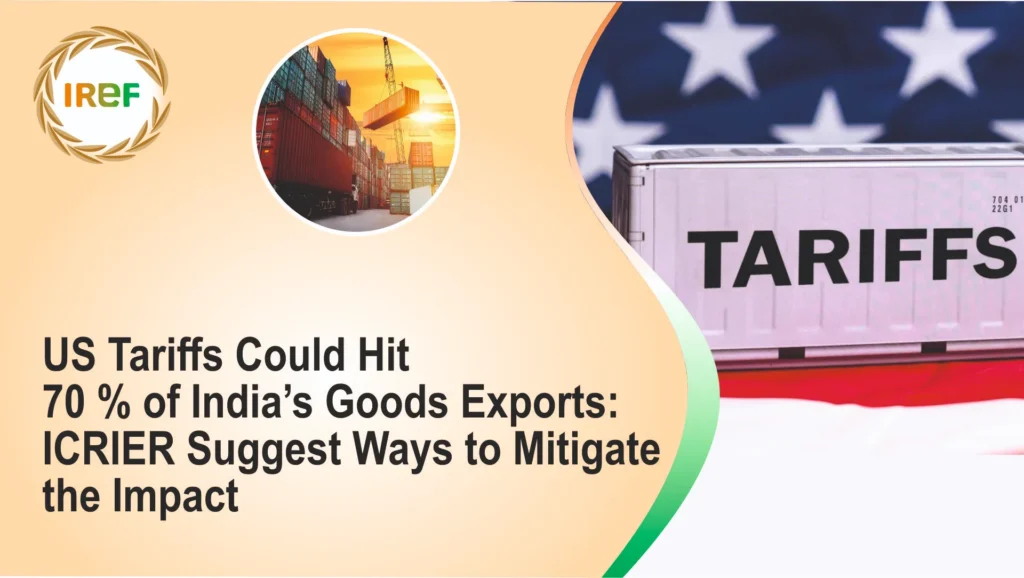US Tariffs continue to make headlines as a latest analysis by Indian Council for Research on International Economic Relations (ICRIER) an economic policy think tank suggests that around 70 per cent of India’s goods exports to the US, valued at $60.85 billion, are now exposed to the 50 per cent tariff imposed by the US administration.
The analysis is a matter of concern for key Indian sectors, however what brings a big sigh of relief is that the figure represents just 1.56 per cent of GDP and 7.38 per cent of total exports. Thus, US Tariffs till now is far from a catastrophe for India’s $3.9 trillion economy.
ICRIER Highlights the Scope of US Tariffs
Donald Trump led US administration imposed a 25 per cent tariff on Indian goods which was later increased to an additional 25 per cent tariff to a total of 50 per cent. The decision of imposing tariff on India was reportedly linked with India’s continued imports of Russian oil. Indian Council for Research on International Economic Relations (ICRIER) in its report titled ‘Navigating Trump’s Tariff Blow’ outlines the specific challenges posed by these tariffs on several Indian sectors, along with suggesting ways to mitigate the impact.
The report authored by Ashok Gulati, Sulakshana Rao, and Tanay Suntwal, argued that the impact of US Tariffs is heavily concentrated in labour-intensive and high-value sectors such as textiles and apparel, gems and jewellery, auto parts and agricultural products, notably shrimp. “These sectors not only anchor the merchandise exports to the US but also directly affect employment generation and the livelihoods of millions of workers and farmers,” the ICRIER report read. When compared to India countries like Vietnam (20 per cent), Bangladesh (18 per cent), Indonesia, Malaysia, and the Philippines (19 per cent), and Japan and South Korea (15 per cent) enjoy lower rates.
The report further stated that India after the US Tariff on textiles and apparel sectors now faces a threat to its competitive position in its key export market. Both these sectors face a tariff disadvantage of over 30 percentage points compared with competitors like Bangladesh, Pakistan and Vietnam. Gems and jewellery exports, worth USD 11.9 billion, face similar challenges against suppliers such as Turkey, Vietnam, and Thailand.
When discussed about agriculture, the reports suggests that shrimp exports will be the most affected sectors. Shrimp exports now face 50 per cent tariffs higher than those applied to competitors like Ecuador, Indonesia, and Vietnam, in addition to the existing anti-dumping and countervailing duties India faces.
ICRIER Suggest Ways to Mitigate the Impact of US Tariffs
ICRIER suggested three ways to mitigate the impact of US Tariffs, that involves smart negotiations with logic and rationality, immediate and targeted relief support to hard hit sectors and last but the high-priority step is to diversify the export markets of India. “The success of our leaders will be ensuring that short-term disruptions give way to long-term gains, reinforcing India’s position as a trusted and indispensable player in the global economy,” the abstract of the ICRIER report concluded.



